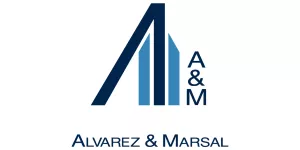On 1 January 2021, the Netherlands introduced a conditional withholding tax (CWHT) on interest (and royalty) payments. This CWHT will be extended to cover dividends. This amendment has already been adopted by the Dutch Parliament and will become effective on 1 January 2024. This CWHT can have a significant impact given the tax rate of 25.8%. This publication includes our recommendations and highlights the key considerations for private equity, real estate and infrastructure funds.
Although the mechanics are similar to the existing CWHT mechanics, there are various minor differences. We recommend to assess the impact on an entity-by-entity basis irrespective of CWHT analyses conducted in the past, as dividend flows can be different from interest flows. The CWHT on dividends will also be new to investment funds that do not make use of intercompany financing.
Relevance for the investment funds industry
The CWHT on interest is already relevant for investment funds with Dutch holding companies, Dutch financing companies, Dutch property companies and non-resident companies that directly hold Dutch real estate or have a permanent establishment in the Netherlands. In case such companies have been financed with intercompany debt, interest payments can theoretically be in scope.
The CWHT on dividends will similarly be relevant as of 1 January 2024.
In an investment funds context, the CWHT is typically only triggered when interest or dividends are paid directly, or indirectly via an intermediary company, to:
- Funds in LTJs – A fund vehicle established in an LTJ. Examples of commonly observed LTJs in the funds industry are the British Virgin Islands, Cayman Islands, Guernsey and Jersey.
- Funds with a hybrid qualification – A fund vehicle that qualifies as a (reverse) hybrid entity due to the tax classification applied by an investor (i.e., tax opaque whereas the fund vehicle is transparent in its jurisdiction of establishment). Examples are hybrid situations resulting from US check-the-box elections or tax entity classification rules that deviate from international standards. Fund vehicles prone to a hybrid qualification are contractual entities, such LPs, funds for joint account and trusts.
- Investors in LTJs – An investor in a tax transparent fund that is established in an LTJ. The UAE is commonly observed as an investor jurisdiction that is also an LTJ, as well as the Cayman Islands, Guernsey and Jersey for fund of funds.
General mechanics of the CWHT on interest and dividends
For the CWHT to be triggered, there needs to be a taxable base (i.e., an interest or dividend payment), a CWHT agent, a taxpayer and the CWHT agent and taxpayer need to be related. Although the CWHT mechanics for interest and dividends are the same, there are various differences. The mechanics described below are limited to the items typically relevant in a fund context.
Taxable base – Interest payments include accruals, economic equivalents, deemed interest payments and connected loan costs. Dividends include distributions on shares, profit rights and loans that qualify as equity for Dutch tax purposes, deemed distributions and certain redemptions, liquidation distributions, repayments of capital and issuances of shares and participation rights.
CWHT agent - For interest payments, a CWHT agent broadly includes tax opaque entities (tax) resident in the Netherlands and/or incorporated under the laws of the Netherlands, as well tax opaque non-resident entities with a (deemed) permanent establishment in the Netherlands to which the loan can be allocated (e.g., real estate in the Netherlands). For dividends, the key difference is that non-resident entities with a (deemed) permanent establishment should in principle be outside the scope of the CWHT on dividends.
Taxpayer – A taxpayer is broadly defined as an entity that is opaque for Dutch tax purposes and that is entitled to the interest and/or dividend and falls within one of the following scenarios:
- Low-tax jurisdiction: The entity is established or resident in an LTJ.
- Hybrid entity: The entity is opaque for Dutch tax purposes, but tax transparent in its jurisdiction of establishment. An escape broadly applies when all investors holding a qualifying interest in the hybrid entity view the entity as transparent and are themselves not resident in an LTJ (or considered an abusive conduit entity or reverse hybrid investor).
- Reverse hybrid investor: The entity is not considered the recipient of the interest and/or dividend for tax purposes in its jurisdiction of establishment, and allocates the interest and/or dividend to an intermediary entity that it views as tax opaque, whereas the Netherlands views that intermediary entity as tax transparent.
- Abusive conduit entity: The entity is resident outside the Netherlands and acts as a pass-through entity that has been interposed to avoid CWHT that would have otherwise been due in case of a direct payment by the CWHT agent to an LTJ entity, hybrid entity or reverse hybrid investor. Meeting certain substance requirements allows for a rebuttable presumption that there is no abuse.
Related party – A CWHT agent and the taxpayer are related in case of a qualifying interest. A qualifying interest is broadly defined as an interest that gives such influence on the decisions of the taxpayer or CWHT agent that it's activities can be determined. This condition is in any case met when more than 50% of the voting rights are (in)directly held. There is also an 'acting together' provision.
A&M Says
- Recommendation – Although similar in mechanics to the already existing CWHT on interest, there are various differences. Dividend flows can also differ from interest flows in an investment fund structure. Moreover, there are funds that have not yet assessed or come across the existing CWHT on interest due to a lack of intercompany financing. Situations at risk typically include fund vehicles and investors that are established in low-tax jurisdictions, and funds that qualify as a (reverse) hybrid due to an investor's tax classification. It can be required to look through foreign intermediary entities. We recommend to assess the impact on an entity-by-entity basis.
- Importance of investor tax-data – As the CWHT can be triggered as a result of the tax profile of certain investors, it can be important for fund managers to monitor their investor base and timely obtain the necessary tax information from investors to assess CWHT risks. Such tax-data can also serve a defense file towards the Dutch tax authorities and will likely already be available for anti-hybrid legislation purposes (e.g., ATAD2).
- Investor tax allocation and protection – The CWHT is another tax measure that demonstrates the importance of tax leakage allocation mechanisms in fund documentation. Such mechanisms, shortly put, allocate tax leakage caused by an investor to that specific investor. This is typically effectuated by deducting the additional tax leakage from distributions to that investor. This mechanism aims to protect other investors from adverse effects on their returns.
- Double taxation discrepancy – The CWHT on interest applies regardless of interest deduction limitation rules that may already apply for Dutch corporate income tax purposes at the level of the payor. For dividends, any regular Dutch dividend withholding tax due on the same distribution can in principle be deducted from the CWHT.
- List of low-tax jurisdictions – An LTJ is a jurisdiction that does not levy a tax on profits or has a statutory profit tax rate of less than 9% or is included on the EU-list of non-cooperative jurisdictions, also commonly referred to as the EU-blacklist. We have included an overview of the Dutch LTJs for 2022 at the bottom of this publication.
- Common hybrid entities – The Netherlands typically views LPs such as the Luxembourg SCSp, Danish K/S, German KG and Cayman LP, as well as and funds for joint account such as the Luxembourg FCP or property unit trusts in Jersey and Guernsey as tax opaque, unless certain very specific requirements are met to qualify as tax transparent. It is expected that the Dutch tax classification of foreign LPs and funds for joint account will be amended effective 1 January 2024.
- US check-the-box elections – US check-the-box elections are important to consider as these can lead to hybrid situations that are impacted by the CWHT. In this respect, specific guidance has been issued by the Dutch Ministry of Finance.
- Related party requirement – Given the 'acting together' provision, it can be important that investors are not a so-called 'cooperating group'. If considered to act together, their interests are aggregated for the related party requirement.
- Substance – Having sufficient (relevant) substance at the level of intermediary holding and/or financing companies allows for a rebuttable presumption that an entity is not an abusive conduit. Developments around what is sufficient (relevant) substance should be monitored and may be affected by the EU's ATAD3-proposal.
- Compliance – The CWHT needs to be reported in a tax return and paid to the Dutch tax authorities within one month after the end of the calendar year. Retroactive assessments can be imposed by the Dutch tax authorities on the WHT agent and taxpayer. The Dutch tax authorities have far-reaching powers to request for information to assess the applicability of the CWHT. The CWHT agent also has an active disclosure obligation towards the Dutch tax authorities.
- Director liability and penalties – Penalties can be imposed when retroactive assessments are imposed and in case the active disclosure obligation is breached. The directors of the WHT agent and/or taxpayer can be held personally liable. A documented review is therefore recommended.
The content of this article is intended to provide a general guide to the subject matter. Specialist advice should be sought about your specific circumstances.



